Everyone remembers their first time.
For me, it was a summer’s day in L.A. Reseda, specifically, in the San Fernando Valley.
It was at my apartment, after work. My two roommates were gone, and wouldn’t be home for a few hours. It was the perfect time to lay back and… get a little action in.
She and I were there for a reason. And we were close. I could feel her ever-so-slightly touching my arm. It may have looked casual, but I was oh-soooo attentive!
So I laid on the couch, right next to where the air conditioner was blowing in the coolest air within a hundred feet… and just listened. For a long time. I knew that all you need is ears to make a big difference in what, and how, she gives.
When it was obvious that all the words had ended, we sat mesmerized for a few seconds, just taking it all in.
Then… with respectful reverie, and slow motion impulse… I picked her up… and played a couple chords.
Yes, my friends, that was the day I listened to my first Beatles album. Just me and my guitar. Both of us would never be the same again.
What? Whaddya mean?? Of course, I was talking about my guitar… whadja think I was talking about?? ‘-p
Yes It Is… the 5th Beatle!

The late Sir George Henry Martin was not only the Beatle’s record producer – he was a producer extraordinaire for hundreds of acts. His list of number one hits blows most of us away: THIRTY number-one hit singles in the U.K. and TWENTY-THREE number-one hits in the U.S. of A. Wow!!
The Queen of England appreciated his legendary expertise so much that in 1996 she bestowed upon him the honor of a “Knight Bachelor”, in thanks for years of outstanding work, and for making England a consistent magical garden for world-renowned musical exports.
There are veeeeery few producers who have accomplished number 1 records in three or more consecutive decades. Martin is one of them (1960s, 1970s, 1980s, & 1990s).
He also has a loooong list of accolades and music business wins. Here are just a few:
- The 1967 Grammy Award for Best Contemporary Album (“Sgt. Pepper’s Lonely Hearts Club Band“)
- The 1967 Grammy Award for Album of the Year (“Sgt. Pepper’s Lonely Hearts Club Band”)
- The 1973 Grammy Award for Best Arrangement, Accompanying Vocalist(s) (“Live and Let Die“)
- The 1977 BRIT Award for Best British Producer (of the past 25 years!!).
- The 1984 BRIT Award for Outstanding Contribution To Music
- The 1993 Grammy Award for Best Musical Show Album (The Who’s Tommy)
- The 2007 Grammy Award for Best Compilation Soundtrack Album For Motion Picture, Television Or Other Visual Media, producer together with his son Giles Martin (“Love” by the Beatles)
The list goes on and on. But, of course, he shall forever be most fondly remembered by most of us for helping create albums by the Beatles, that to this day transcend the moments of their making and reach us deeply decades and decades later.
His family shall always remember him that way too, because his Coat of Arms still hangs in their homes as a reminder – the honorary shield features three beetles, a house martin bird which is holding a recorder, and one simple phrase in Latin:
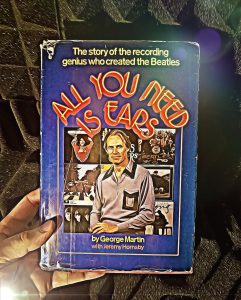
“Amore Solum Opus Est.”
All you need is love. 🙂
Paperback Writer
Sir George penned his auto-biography in 1979. The music business and the recording industry were SOOOO different then, as you shall hear in the upcoming snippets.
It is one of my favorite books concerning music and recording that I’ve ever read, and it’s also a book that I re-read often. He passes on so many helpful insights, as well as dozens of entertaining reminiscences… you just don’t want to put the book down once you pick it up!
It’s not a technical manual for engineers by any means. He keeps it light so the layman reader won’t get lost in pro audio gobbledygook. But neither is it devoid of recording methodology. He talks at length about how they recorded many things in the studios of his career, especially what worked… and what didn’t!
My hope is that, if you’ve never read this literary mine of pure audio gold, you’ll change that today. This book is too good to miss if you’re serious about the music business, recording methods or the timeless qualities of an effective music producer, either for your own music or the music of others.
Let’s hear what a master has to say, shall we?!
The Inner Light
Whenever we try to understand the choices a genius makes, or why an artistic, genre-veering decision was made over another more mundane, expected one, it’s important to get a sense for how the person thinks – how they approach their art from the inside outward.
Sir George gave us many glimpses of this throughout his book. My favorite among them is this one:
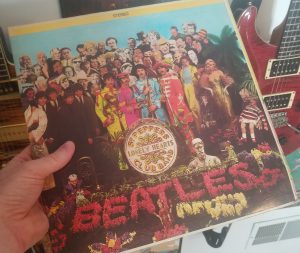
“For me, making a record is like painting a picture. Not only are we painting sound pictures, but our pallet is infinite. We can, if we wish, use any sound in the universe, from the sound of a whale mating to that of a Tibetan wood instrument, from the legitimate Orchestra to synthesized sounds.
That may be why, of all painters, my favorites are the Impressionists: Renoir; Degas; Monet; Van Gogh; Sisley. It’s surely no coincidence that they seem to match so well almost as visual counterparts to the music of my favorite composers Debussy and Ravel.
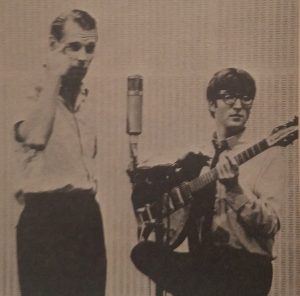
The fascination of recording is that you really do have an unlimited range of musical colors to use. That’s one of the main reasons why I enjoyed working with the Beatles so much, because our success won me artistic freedom.”
I found that Martin is also not a precision nut, in that he’s more about the performance having life, excitement, depth and/or energy than being technically perfect. I’m the same way. I have often left a vocal in on certain songs that wasn’t totally dead-on in regard to pitch, but was close enough, and was couched in a tremendous performance that we really the best take.
Why mess that up, right?! Martin agrees, and puts it this way:
“I’m not a stickler for accuracy. If that was the be-all and end-all, we might as well give up and let computers do all the work. I happen to like a little bit of inaccuracy, a little bit of humanity. Perfect beauty, whether in a woman or anything else… tends to be a bore, and I think that holds true for music.”
Come Together
The late Sir George Martin shares many anecdotes about his history with some of the most well-known artists on the planet. And he never comes across as anything but gracious, thankful and devoted to be the very best producer he can be.
But part of making music, at least in most cases, is working with other people. Other aaaaaartists. And that’s not always easy when you’re the Producer. It wasn’t at first for him, at least.
Listening to him tell of the first time he told a jazz musician that the bassist sounded ‘muddy’ and imprecise is so funny, but it hits home, right? We want the best sounds, but we also have to learn how to best communicate with artistic temperaments to commit the best music to posterity.
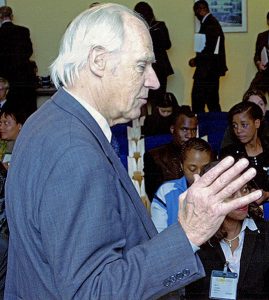
Here’s how Sir George handles the coming together of the technical team and the artists:
“Tact is the “sin qua non” of being record producer. One has to tread a fine line between, on the one hand, submitting to an artist’s every whim, and on the other, throwing one’s weight around.
I had to learn how to get my own way without letting the performer realize what was happening. One had to lead rather than drive. I think that now, as then, that’s probably the most important quality needed in a record producer.”
I also first gleaned from Sir George some specific tasks that a “producer” of music might shoot toward, whether mine or someone else’s. Being “a producer” sounds important, but do we really have defined parameters about what it means??
Here is what it meant to him:
(In regard to the Beatles):“There were four musicians: three guitarists and a drummer, and my role was to make sure that they
- made a concise commercial statement;
- that it ran for approximately 2 and 1/2 minutes,
- that it was in the right key for their voices,
- that it was tidy,
- with the right proportion and form.”
Hearing the act of producing described this way, I started to think about each of those whenever I got behind the console. To this day, I question each of those elements whenever I think an arrangement or a mix is “finished”. Guess you could say my final act is to “George it”, and that usually means… I find something that needs fixed!
He also was one not to dabble too much in the engineering side of things. He started as an engineer, so he knew how to do it quite well, but to Sir George is was more a matter of focus… :

“There’s a race of men who are producer-engineers; they combine both functions. In theory, I could do that, but I do not think it is a very good idea. I would not be able to see the wood for the trees. The essence of a producer’s job is to be impartial. He must be able to see the whole picture, and make a value judgment as quickly as possible.
But when you are playing about with Equalization knobs, trimming limiters and compressors, varying the amounts of echo or reverberation time, and involving yourself in a million other technical activities, you tend not to listen to the music. And I am rather single-minded about that.
“The Producer’s function is to listen to the sound and to the music as an overall unit together, and from that he must judge the recording. An engineer’s function is to ensure that, technically, it is the very best recording obtainable. If they are worrying about each other’s area of responsibility, they are not doing their jobs properly.”
For most of my career, I’ve had to do most things myself. Even today I still wear the hat of engineer, producer, writer, performer, marketer, publisher… geez, I’m gettin’ tired just sayin’ ’em all!
But my dream?? To just be a Paul, or John, or George or Ringo… and let someone like Sir George Martin do all that other, so I can just write, and play, and sing…
and write, and play, and sing…
and write, and play, and sing…
and write…
Who’s wi’ me?!! 😉

Norwegian Wood (Studio!)
Recording music always has to take place somewhere, and maybe you, like me, have been dreaming most of your life about creating lasting songs from such a personal, perfected space.
It was from Sir George that I first began envisioning my own personal studio. From his years of experience I learned many things that I hadn’t yet heard up to that point. His stories of Abbey Road Studios, where the Beatles recorded, and then his own AIR Studios, were inspirational. And still are.
One of them had to do with non-parallel walls. That’s something that’s hard to find in most buildings, but extremely helpful in being able to capture with mics an accurate sound picture without artificially amplifying certain frequencies. I still remember the first time reading how he put it:
“The ideal way of building reflective services for acoustic purposes in recording is to make them refract the sound. You make the sound waves bounce off a new direction rather than return the way they came.
The ideal studio, therefore, is one in which the walls are never parallel. It’s also preferable for them never to be straight. So the studio has to be a compromise.”
But he also confided that a studio is not one thing with one sound. It should have several options:
“At AIR (Martin’s studio) we generally have a hard floor in a fairly reflective ceiling at the string end of the studios (where he records orchestras). We keep one end of the studio live, and the other, where I normally put the Rhythm Section, dead.”
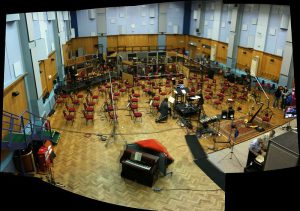
He went on to describe many other important attributes of ‘what makes a good studio’, and I learned much from what he imparted. Basically, I credit him for making me believe I could have a studio of my own one day.
I do not, however, typically record drums the way he did in the early days. Check this out:
“I tend to be quite extravagant in my use of tracks for rhythm. I usually have the bass drum on its own track, then two tracks for the stereo overhead sound of the drums in order to get an ambient ‘feel’, and a fourth track for the snare drum. That’s four tracks for drums alone!”
Okay, so… it’s clear that extravagance changes from decade to decade. I understand why he says this, because when the Beatles first started they only had TWO TRACKS to record onto. That’s what you hear on their first two albums. So using 4 mics just for the drums was probably considered “pushing it” back then.
Anyone wanna guess how many mics I bring into Pro Tools from my red Pearl studio drum kit? Try THIRTEEN!!
Sorry, Sir George. I’m just an audio glutton! lol
You Never Give Me Your Money
That’s what songwriters say to today’s streaming websites. LOL
Seriously though, these days, if you’re a songwriter, you’re in hard times. Harder than I’ve seen in my lifetime. I know, ‘cuz I’m one.
You know what’s astounding?? To think that, not that long ago, a songwriter could make an amazing living doing what they’re best at. Those were the days before streaming… before ITunes… before Napster kicked the ball right outta the stadium.
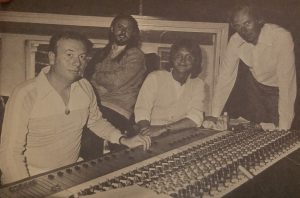
But when Martin was producing, it was much different…
“If an album in America goes gold – that is if it sells half a million copies – it will earn the producer a small fortune. The retail price of an album is about $8. A 3% royalty works out at something over 20 cents an album. So a “gold” album means $100,000 for the producer.
With the successes that I have had in producing the group “America” – records like “History”, “Hideaway” “holiday” and “hearts” – I was bringing in something like half a million dollars a year.”

Eight Days A Week!
As grandiose as having all that cash sounds, it did not come without serious commitment, and extended periods of hard, focused work. No record exec was just handing out money. They expected results, something that Martin deftly provided. He says that in the early days…
“For the Beatles we agreed that, if possible, we would release a single every 3 months, and a long playing record every year.
It seemed to work: out of the 52 weeks of 1963 we topped the charts no less than 37 times.
Sleep was something of a luxury that year.”
Lest we think that Sir George had to live at the studio and never see friends or family for decades, it’s very eye-opening to hear the typical recording schedule that it took during his early days. It suuuuuure isn’t this way now…
“We have come a long way from that first Beatles album, “Please Please Me”, which I started at 10 o’clock one February morning in 1963, and which was all mixed and ready for issue by eleven o’clock that night!”
Um, uh… yea. Okay, I’m not even going to mention how long ONE SONG on my latest album took.
It wasn’t one day, that’s for sure!!!
With A Little Help From My Friends
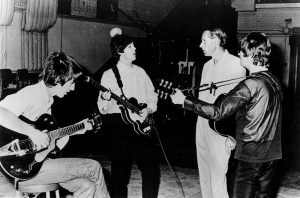
It’s quite fascinating to hear how Sir George views the Beatles, obviously. He was there, all the time, with them, for almost every song, every recording, every vocal where the lyrics were finally nailed down and committed to. Amazing. True to what I always suspected, based on what I heard on every Beatles album, Martin describes the hierarchy in the studio with the band this way:
“I must emphasize that (in the Beatles) it was a team effort. Without my arrangements and scoring, very many of the records would not have sounded as they do. Whether they would have been any better, I cannot say. They might have been. That is not modesty on my part; it is an attempt to give a factual picture of the relationship.
But equally, there’s no doubt in my mind that the main talent of that whole era came from Paul and John. George, Ringo and myself were subsidiary talents. We were not five equal people artistically: two were very strong and the other three were also-rans.”
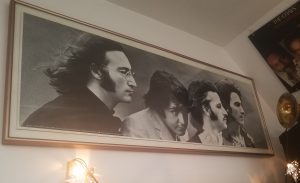
Martin’s respect for Paul and John is obvious throughout his book. I guess if we’d seen two people bring in hit after hit, year after year, not relying on the same ol’, same ol’, but constantly breaking new audio and songwriting barriers, we’d be pretty awe-struck too!
Of John, Sir George opines:
“John’s imagery is one of the great things about his work: “Tangerine trees”; “marmalade Skies”; “cellophane flowers”. I hope it doesn’t sound pretentious but I always saw him as an aural Salvador Dali, rather than some drug-ridden record artist.”
Of Paul, Martin stated what I’ve always thought of McCartney too, saying…
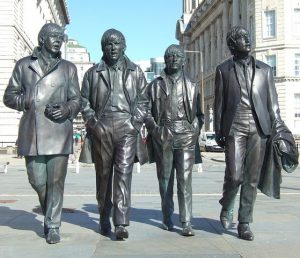
“Of the four, Paul was the one most likely to be a professional musician, in the sense of learning the trade, learning about notation, and harmony and counterpoint. He’s an excellent musical all-rounder: probably the best bass-guitar player there is, a first-class drummer, brilliant guitarist, and competent piano player.”
Martin goes on in the book to talk about how the Beatles had a perfect balance, both within and without (nod to George Harrison here). They knew enough about music to be dangerous, but were not so “schooled” that they couldn’t try things that to Martin were far afield from his classical music tradition.
Showing his smarts for the business, he never tried to force his style upon them. Rather, he did everything he could to complement their style with his musicianship.
In My Life
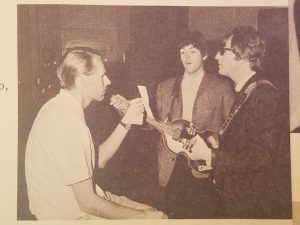
Sir George Martin is gone now. He passed in his sleep in 2006. But he is not forgotten. Nor shall he ever be. His legacy, and that of the Beatles, are too ingrained into our collective conscience.
For me, he shall continue to be a very present part of my life whenever I go into the studio to work on my art. I have dozens of my favorite albums hanging on my studio walls. His name is on many of them.
Thankfully, he not only wrote his wonderfully astute observations and informed preferences in his auto-biography, but also shared with us his smile and proper English lilting voice in numerous videos. If you have not yet seen these documentaries, GO BINGE ’em now! They are:
- Soundbreaking: Stories from the Cutting Edge of Recorded Music, 2016 PBS film
- Produced by George Martin, 2011 BBC film
- The Rhythm of Life, 1997 BBC film
Finally, in writing this article, I was floored to find that the hardcover first-edition copy of “All You Need Is Ears”, just like mine, is selling online for upwards of $400! Wow!! I could sell it and get that new Nuemann mic I’ve been wanting… !
Alas for Neumann, I will never get rid of this book. It’s too precious, too insightful, too inspirational… and one of the best reads a musician, producer, engineer or songwriter could get.
GET IT HERE for yourself. You’ll see exactly what I mean.
In the meanwhile though, make like you’re a member of Sgt. Pepper’s band and go… make… sounds!!
Teaj

I just gone through your article and I’m so inspired by your journey! I love the way you weave journey, anecdotes, and personal experiences together to create a captivating narrative. Keep up the great work!
Yea, I gotta say, Jack… there’s not a lot that stops me in my tracks with its excellence these days. But there are some!
The Beatles truly would not have been the groundbreaking group that they are without George Martin. In fact, I’d go so far to say I don’t think we’d laud them with so much acclaim if Martin hadn’t produced them. I think he was always thinking, along with Lennon especially, about what I write about in THIS POST – namely, how to create music outside the normal “box” of habits and expectations.
He was one of a kind. I wish he’d hung around longer so I COULD have recorded with him!
I find it amazing that they were able to churn out so many singles in 1963 – to top the charts 37 times is just unreal, that would never happen today. What’s impressive is that the music is so much better than today’s too, and their output so much higher. Some artists today maybe release two or three songs a year – you wonder what else they do with their time – the luxury of being a famous musician, I suppose!